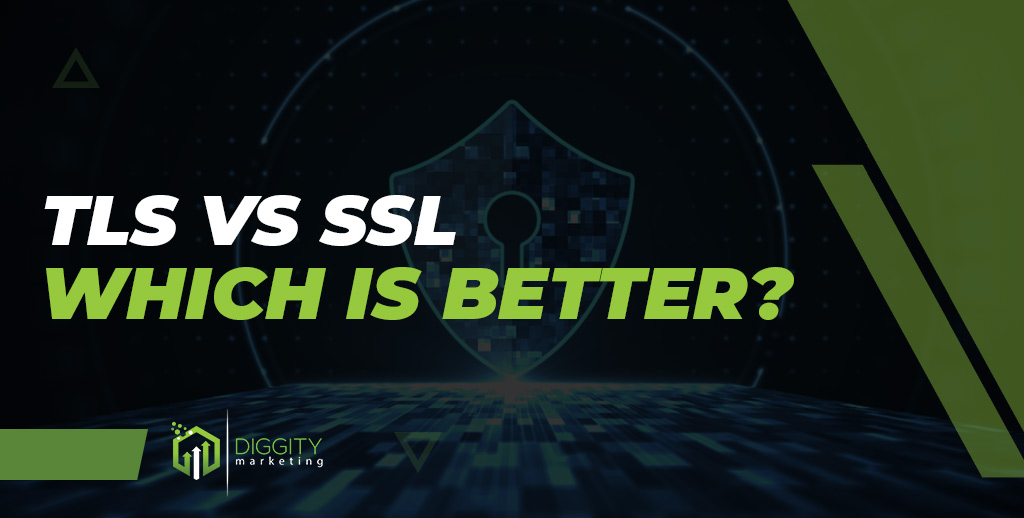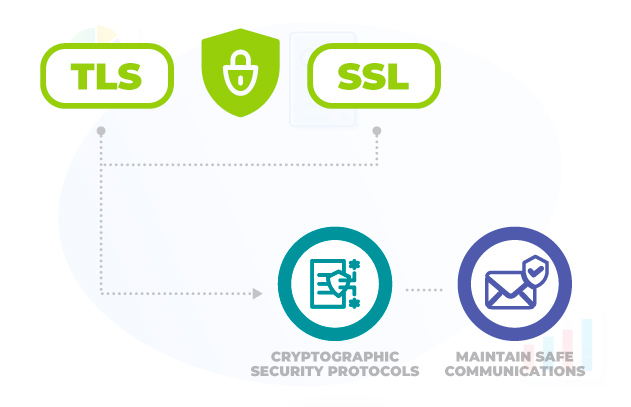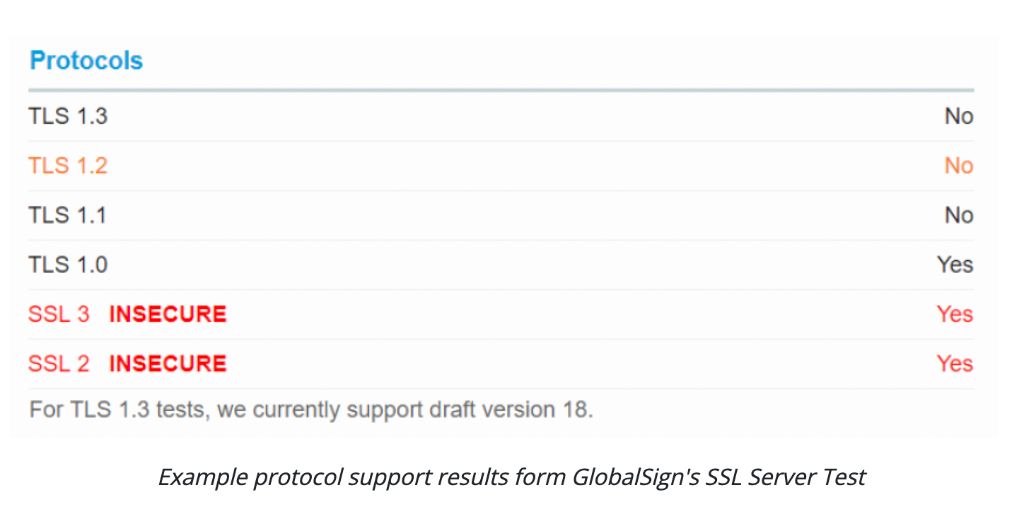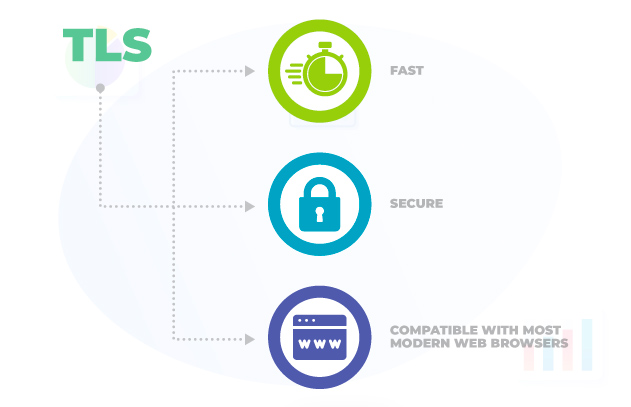
As someone with extensive experience in building websites, I can attest to the importance of understanding TLS and SSL, two critical security protocols.
You’ve likely encountered security alerts when visiting web pages without an SSL certificate.
But what exactly are SSL and TLS? What functions do they serve? And why has SSL been superseded by Transport Layer Security (TLS)?
In this article, we will define SSL and TLS, delve into how these protocols safeguard websites, and compare their effectiveness to determine which one is better suited for your needs.
Table Of Contents
Quick Summary
The TLS certificate is the successor to each and every SSL version and offers superior security.
TLS utilizes a better record protocol, more cipher suite options, and a faster handshake than SSL.
TLS certificate offers improved encryption, compression, and latency.
What Are TLS And SSL?
TLS and SSL are cryptographic protocols that maintain safe communications on the web.

SSL preceded TLS. Yet, much of the secure socket layer functionality still exists.
Aside from their wide use in web design, the SSL and TLS protocols also provide secure emails, instant messages, and Voice over Internet Protocol (VoIP) phone calls.
To promote secure communications online, TLS performs various functions, including:
Fragmentation — Breaks down data into manageable packets
Compression — Lowers bandwidth and latency requirements
Message Integrity — Creates digital signatures and message digests to thwart tampering
Confidentiality — Uses an encryption algorithm, one-time master secret key, and message authentication code (MAC) to protect data
Framing — Adds a header and trailer to “frame” data packets before transmission
There are only two types of companies: those that have been hacked and those that will be.
– Robert Mueller, former FBI Director
Why Was SSL Replaced By TLS?
SSL was replaced by TLS 1.0 in 1999 due to known security flaws in SSL 3.0.

However, the new TLS protocol allowed users to downgrade to SSL 3.0 when needed. Hackers targeted this feature with cipher block chaining (CBC) to undermine the advanced security of TLS 1.0.
To combat the downgrade attack, TLS 1.1 was released in 2006.
Differences Between TLS And SSL
Because TLS stems from secure socket layer (SSL) protocol, they share much in common. However, the TLS cryptographic protocols improved upon the SSL protocols, creating many differences.
TLS Uses An Updated Record Protocol
Transport layer security utilizes a more recent record protocol to encrypt data and maintain a secure connection than the SSL protocols do. All TLS versions use a hash-based message authentication code (HMAC), while record protocol SSL uses a standard MAC.

As new security threats emerge, users need updated message encryption.
That way, they can address security flaws and protect sensitive data. TLS 1.3 uses the latest symmetric and asymmetric cryptography to provide secure communication over implicit and explicit connections.
TLS Has Better Cipher Suites
SSL and TLS both use cipher suites to create keys and encrypt messages. However, the deprecated SSL protocols incorporate the Fortezza cipher suite, while TLS supports all of the latest cipher suites.
TLS And SSL Have Different Handshake Processes
TLS has a more advanced handshake process than SSL.

It requires less back and forth between your computer and the web server to establish communications.
The result is a faster, simpler, and safer connection than the SSL handshake could ever provide.
The Internet Engineering Task Force (IETF) released TLS 1.3 in 2018.
They simplified the handshake.
A server only needs to send one message during the process, assuming optimal client and server configuration.
SSL Delivers The Familiar “No Certificate” Alert
Almost every internet user has come across an SSL certificate error at some point. Google Chrome and other web browsers warn users about missing, expired, or unverified SSL certificates.

The old SSL alert said, “Your Connection Is Not Private.”
In the latest TLS version, users now see a variety of alert messages, including:
No certificate
Bad certificate
Unsupported certificate
Certificate revoked
Certificate expired
Certificate unknown
Is TLS Better Than SSL?
Yes, TLS is better than SSL because it’s a faster, more secure protocol that’s compatible with most modern web browsers.

Transport Layer Security (TLS) is a cryptographic protocol designed to provide secure communication over a computer network, which includes protection from eavesdropping and tampering. One of its most significant improvements over the Secure Sockets Layer (SSL) is its stronger encryption algorithms, which ensure enhanced confidentiality and integrity of data in transit.
In SSL, there are known vulnerabilities that can potentially be exploited by malicious actors, such as the POODLE and Heartbleed attacks. However, these flaws have been addressed in TLS, resulting in a more robust protocol.
TLS employs advanced encryption algorithms, such as the Advanced Encryption Standard (AES), that offer superior security compared to the older encryption methods used by SSL.
AES is a more efficient and resilient symmetric encryption standard that effectively resists various forms of cyber attacks.
Therefore, the enhanced encryption offered by TLS significantly bolsters the security of data communications.
Another major advantage of TLS over SSL is the faster connection establishment time.
TLS incorporates an optimized handshake process that expedites the establishment of secure connections. This results in less latency and improved performance, which is crucial for real-time applications, such as online gaming, video streaming, and Voice over IP (VoIP).
TLS also provides the ability to patch and upgrade more efficiently compared to SSL.
The designers of TLS took into account the need for protocol evolution, allowing for secure, backward-compatible updates to the protocol.
This makes it possible to implement patches for vulnerabilities or add new features without breaking existing implementations, thus ensuring a smoother, safer browsing experience.
Moreover, TLS offers better compatibility with modern web technologies and browsers.
The internet has evolved significantly since SSL was first introduced, and modern web browsers have phased out support for older SSL versions due to their inherent security vulnerabilities.
In contrast, TLS is actively maintained and updated to keep pace with the rapidly evolving landscape of internet technologies and threats. It is the standard protocol for secure web communications and is widely supported across all modern browsers and servers.
In terms of regulatory compliance, organizations are often required to use TLS to meet certain security standards.
For instance, the Payment Card Industry Data Security Standard (PCI DSS) mandates the use of TLS for secure card transactions over the Internet. SSL, due to its known vulnerabilities, does not meet these rigorous security standards.
The advantages of TLS over SSL make it the preferred protocol for securing network communications.
Its advanced encryption algorithms, faster connections, efficient patching mechanism, and compatibility with modern technologies provide a more secure, efficient, and compliant means for transmitting sensitive data over the internet.
This underscores the importance of adopting the latest security protocols, such as TLS, in our increasingly interconnected and digital world.
What Does SSL/TLS Protocol Do?
The SSL/TLS protocol enables secure data transfer between client computers and web servers. For most users, data transfers occur between web browsers and websites.

Discover some of the ways SSL and TLS protocols improve the user experience for internet users below.
Protects Against Eavesdropping And Message Tampering
One of the main purposes of TLS is defend against illegal wiretaps and message tampering. This protection extends to personal video calls, online transactions, and more.
TLS ensures your data reaches the recipient in its original form, without anyone being able to view, copy, or alter it.
Increases Latency For Website Visitors
While most users won’t realize it, TLS increases latency for website visitors. It slows down page speed and negatively impacts user experience.

The increased latency remains minimal and more than makes up for it with increased communications security.
Optimized Encryption
TLS transport layer security optimizes encryption to offset the increased latency.
Once a connection is secured, TLS encrypts messages in a way that maximizes transfer speed while maintaining security.
Is TLS Faster Than SSL?
TLS is faster than SSL protocol due to a streamlined handshake process, superior compression, and reduced errors.

TLS utilizes asymmetric encryption when creating a connection between a client and a web server.
Once the TLS protocol establishes a connection, it switches over to symmetric encryption to maximize speed.
Why Do I Need An SSL/TLS Certificate?
You need an SSL/TLS certificate to protect your identity, personal details, and online transactions.
As online attacks increase in frequency and magnitude, so does the need for a TLS transport layer security certificate with a robust, hash-based message authentication code.

Because TLS 1.3 performs encryption services at each endpoint, it serves as one of many measures you can implement against hackers.
Affiliate marketers have an interest in using the most secure version of TLS.
Google and other search engines consider security certificates when ranking websites. For now, that means affiliates should upgrade to TLS 1.3.
Why Do They Still Call Them SSL Certificates If TLS Is Used?
They still call them TLS certificates or SSL certificates because the entire world has grown accustomed to the old ways.

In other words, the term “SSL certificate” got grandfathered in despite the deprecation of SSL 3.0.
Also, professionals who deal with security certificates prefer to maintain the distinction between the certificate and the protocol by referring to them as SSL and TLS, respectively.
Don’t worry if you recently purchased an SSL certificate. In all likelihood, you have the latest security certificate with TLS 1.3 even though the seller sold it to you as SSL.
Is HTTPS SSL Or TLS?
HTTPS is both SSL and TLS — it’s SSL/TLS. Even before TLS 1.0 began replacing SSL 3.0, HTTPS required an SSL certificate to encrypt data based on the standards of the day.

Now, almost all of the most popular websites use TLS 1.2 or 1.3.
If you see a web address that starts with HTTPS, that means the Hypertext Transfer Protocol has layer security. HTTP, without the “S,” is considered unsecured.
Users who visit a website that starts with HTTP may encounter a security alert in their web browsers.
The internet is a wonderful thing. But it opens the door to many crimes, so you have to stay ahead of it.
– Frank Abagnale, former con artist and author
Conclusion
Now that you have a firm understanding of SSL and TLS, you can check which certificate we use at Diggity Marketing. To view our certificate follow these three easy steps:
 Click on the lock icon on the far left side of the address bar.
Click on the lock icon on the far left side of the address bar.
 Click “Connection is secure.”
Click “Connection is secure.”
 Click “Certificate is valid.”
Click “Certificate is valid.”
 Click on the lock icon on the far left side of the address bar.
Click on the lock icon on the far left side of the address bar. Click “Connection is secure.”
Click “Connection is secure.” Click “Certificate is valid.”
Click “Certificate is valid.”
